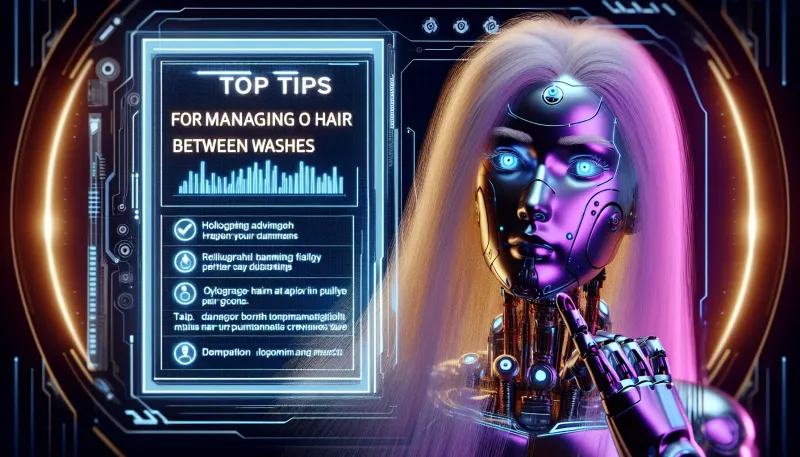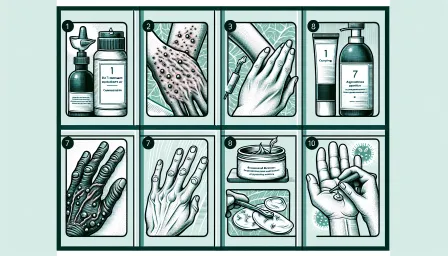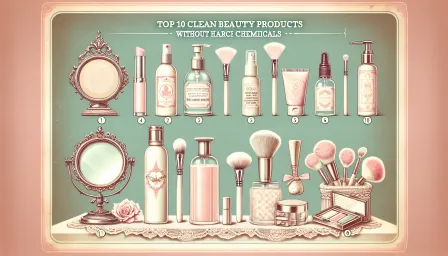Top Tips: How to Manage Oily Hair Between Washes

Discover effective ways to manage oily hair between washes. Learn practical tips and tricks to keep your hair looking fresh and clean without over-washing.
Struggling with oily hair between washes can be frustrating. While regular washing helps, it's not always practical or beneficial to shampoo daily. Here's how to manage oily hair between washes using effective and sustainable methods.
Understanding the Causes of Oily Hair
Before diving into solutions, it’s essential to understand why hair becomes oily. The scalp produces sebum, an oily substance that helps protect and moisturize your hair. However, overproduction of sebum can lead to greasy hair. This can be due to several factors:
- Genetics: Some people naturally have oilier scalps due to genetics.
- Hair Type: Fine hair tends to show oil more quickly than thick or curly hair.
- Hormones: Hormonal changes, such as those during puberty, menstrual cycles, or stress, can affect sebum production.
- Diet: A diet high in fats and sugars can contribute to oily hair.
Practical Tips for Managing Oily Hair
1. Use Dry Shampoo
Dry shampoo is a go-to solution for many people with oily hair. It works by absorbing excess oil, giving your hair a fresher appearance without the need for washing. Apply it to your roots and brush it through to distribute evenly.
2. Avoid Over-Brushing
While brushing your hair helps distribute natural oils, over-brushing can stimulate your scalp to produce even more oil. Try to limit brushing to a few times a day.
3. Choose the Right Hair Products
Opt for shampoos and conditioners specifically designed for oily hair. These products typically contain ingredients that help control oil and do not weigh the hair down.
Recommended Ingredients: Tea tree oil, salicylic acid, and charcoal are known for their oil-fighting properties.
4. Wash Hair Less Frequently
Washing your hair too often can strip it of natural oils, causing the scalp to overcompensate by producing more oil. Try to extend the time between washes gradually.
5. Maintain a Healthy Diet
Your diet can significantly impact the oiliness of your scalp. Eating a balanced diet rich in vitamins and minerals can help regulate sebum production.
- Include: Fruits, vegetables, lean proteins, and whole grains.
- Avoid: Excessive amounts of sugary and fatty foods.
Long-Term Strategies for Oil Control
6. Scalp Treatments
Specialized scalp treatments can help manage oil production. Look for treatments containing ingredients like clay or witch hazel, which can absorb excess oil and purify the scalp.
7. Regular Hair Trims
Keeping your hair trimmed can reduce the appearance of oily hair ends, making your hair look healthier and more balanced.
8. Avoid Heat Styling
Frequent use of heat styling tools can stimulate oil glands. Try to minimize the use of blow dryers, straighteners, and curling irons.
9. Stay Hydrated
Drinking plenty of water helps your body, including your scalp, stay hydrated. This can prevent overproduction of sebum.
10. Manage Stress
Stress can trigger hormonal changes that increase oil production. Practice stress-reducing techniques like meditation, yoga, or even regular exercise to help keep your hormones and, consequently, your sebum production in check.
Natural Remedies for Oily Hair
11. Aloe Vera
Aloe vera is effective in balancing the pH levels of your scalp and controlling sebum production. Apply fresh aloe vera gel to your scalp, leave it on for 30 minutes, and rinse with lukewarm water.
12. Lemon Juice
Lemon juice's acidic nature helps balance the scalp's oil production. Dilute lemon juice with water and apply it to your scalp for 5-10 minutes before rinsing.
13. Green Tea Rinse
Green tea contains antioxidants that can help reduce oil production. Brew a cup of green tea, let it cool, and use it as a final rinse after shampooing.
Conclusion
Managing oily hair between washes can be challenging, but with the right strategies, it’s entirely possible. Incorporate these tips into your hair care routine to keep oiliness at bay and maintain fresh, healthy-looking hair. Remember, it's about finding a balance that works for you and your unique hair type.
By understanding the root causes and employing these practical tips, you can confidently manage oily hair and extend the time between washes. Say goodbye to greasy locks and hello to a cleaner, more manageable mane!



























